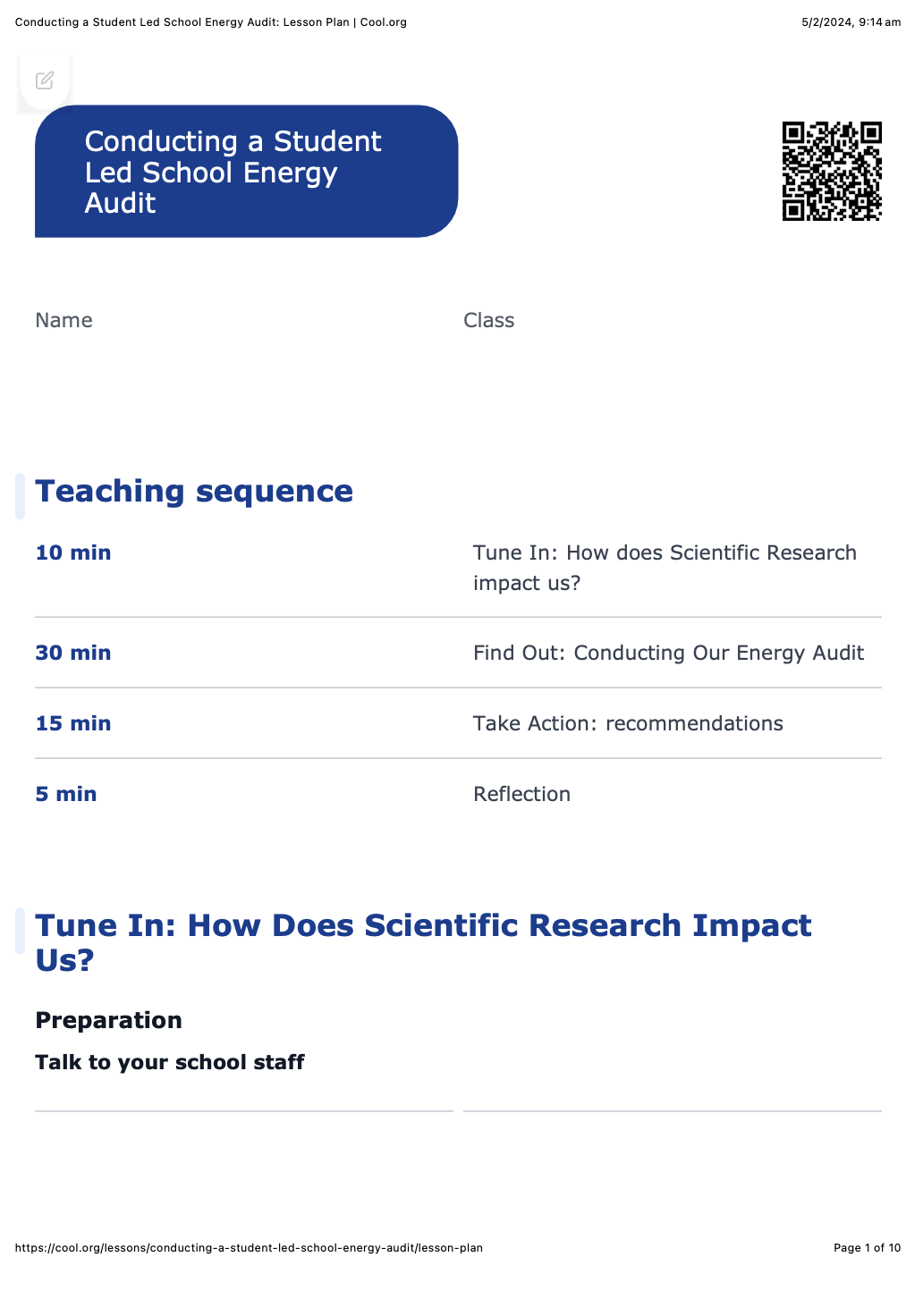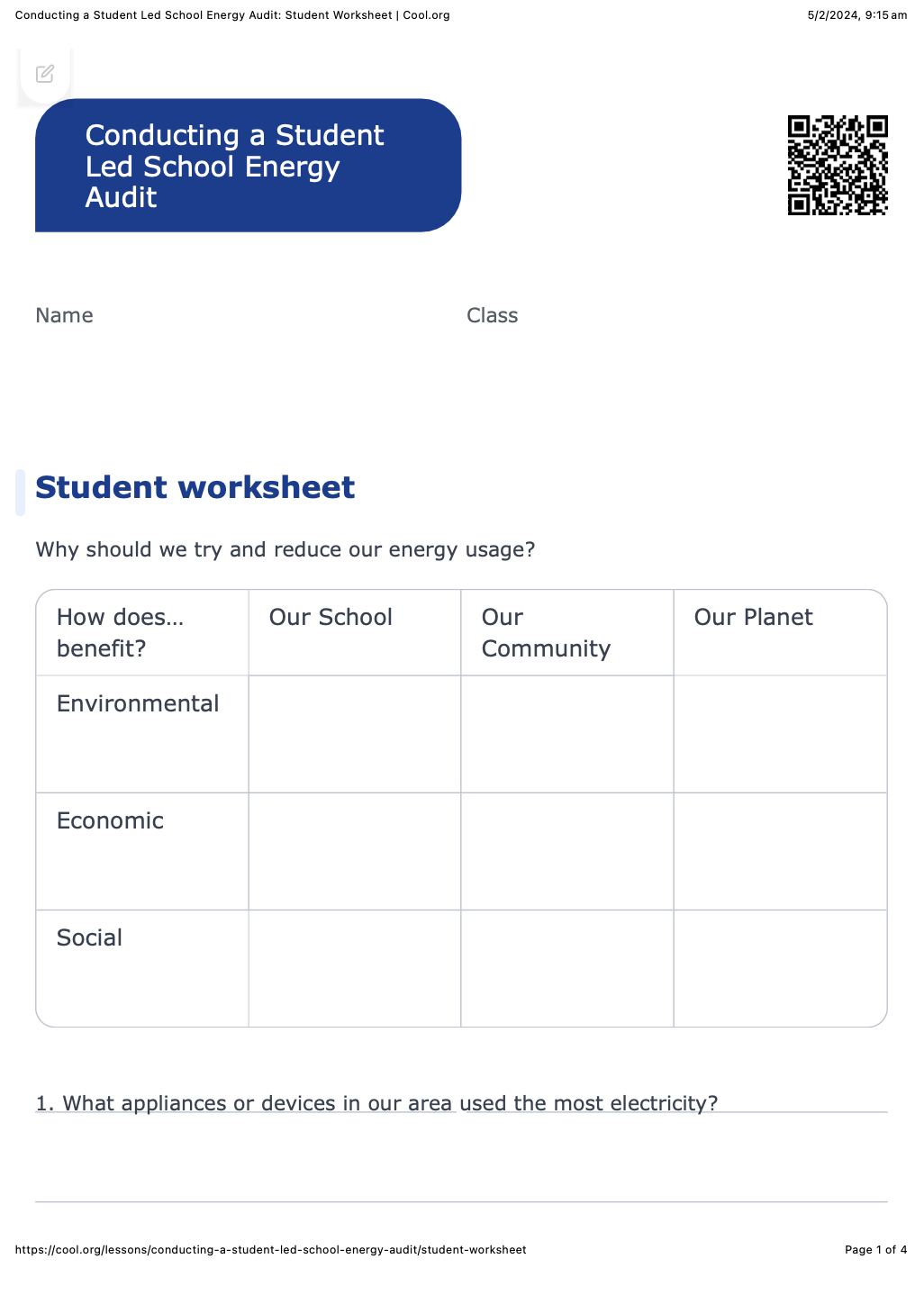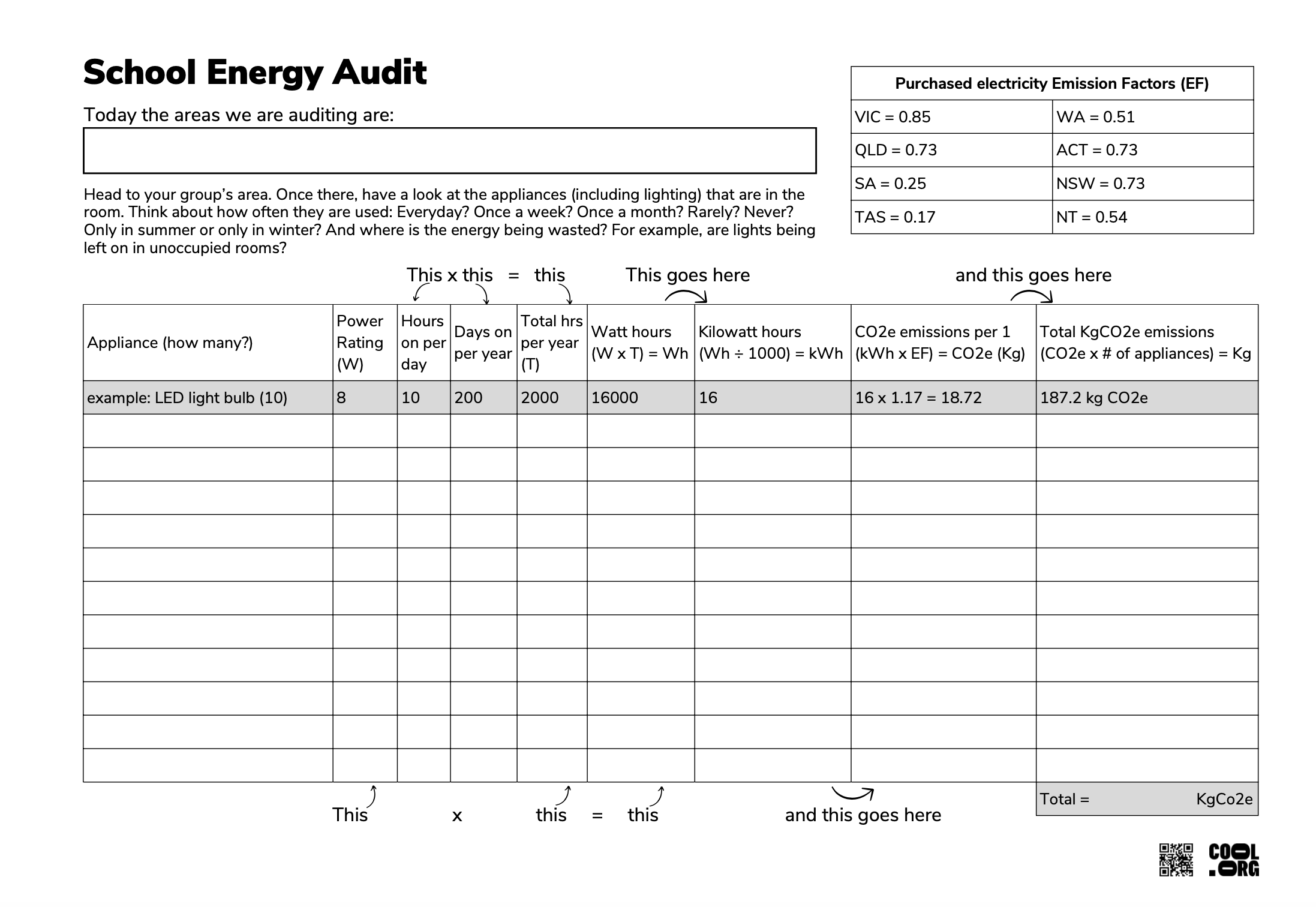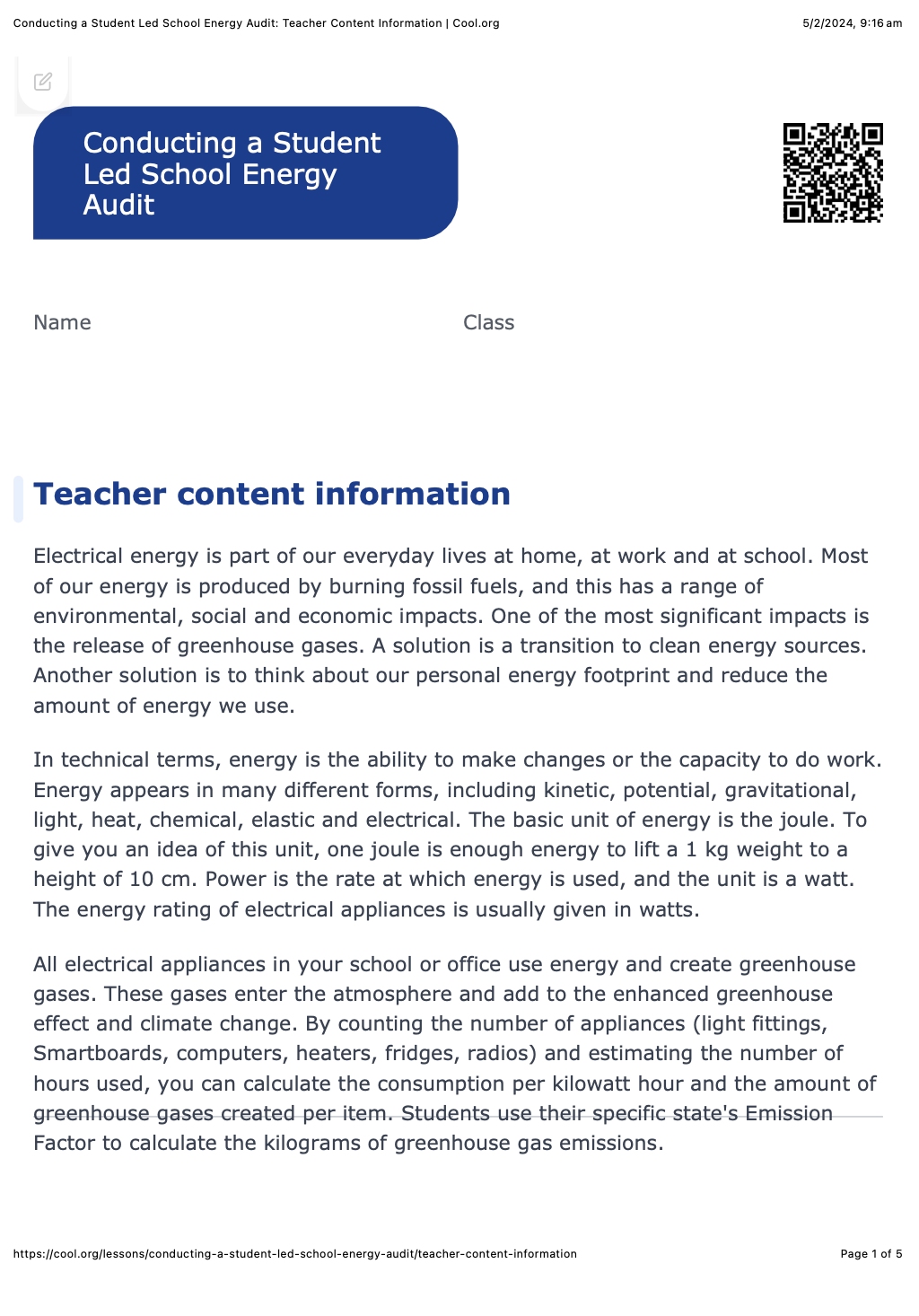Lesson summary
Students will investigate their school’s energy use, identify areas of energy wastage and create recommendations for saving energy. They will calculate greenhouse gas emissions and discuss the social, economic and environmental impacts of reducing energy usage.
Learning intentions:
Students will...
- investigate their school’s energy usage and how they could save energy.
Success criteria:
Students can...
- describe why saving energy is desirable
- calculate the greenhouse gas emissions of energy use
- propose methods of saving energy
Lesson guides and printables
Curriculum links
Select your curriculum from the options below.
Lesson details
Skills
This lesson is designed to build students’ competencies in the following skills:
- critical thinking
- collaboration
- initiative
- leadership
- problem-solving
Curriculum Mapping
Australian Curriculum (v9.0) content description:
Year 7, Science
- examine how proposed scientific responses to contemporary issues may impact on society and explore ethical, environmental, social and economic considerations (AC9S7H03)
Year 8, Science
- examine how proposed scientific responses to contemporary issues may impact on society and explore ethical, environmental, social and economic considerations (AC9S8H03)
Year 9, Science
- examine how the values and needs of society influence the focus of scientific research (AC9S9H04)
Year 10, Science
- examine how the values and needs of society influence the focus of scientific research (AC9S10H04)
General capabilities: Critical and Creative Thinking, Digital Literacy, Numeracy
Syllabus outcomes:
- SC4-2VA shows a willingness to engage in finding solutions to science-related personal, social and global issues, including shaping sustainable futures
- SC5-2VA shows a willingness to engage in finding solutions to science-related personal, social and global issues, including shaping sustainable futures
Cross-curriculum priority: Sustainability
Relevant parts of Year 7 - 10 achievement standards: Students identify the factors that can influence the development of scientific responses and how these responses impact society.
UN Sustainable Development Goals
Goal 7: Ensure access to affordable, reliable, sustainable and modern energy for all.
- Target 7.3 - By 2030, double the global rate of improvement in energy efficiency
Resources Required
- Clipboards, pencil and energy audit worksheets (1 per group)
- Student worksheet (1 per student)
Additional Info
We have joined forces with Smart Ease to craft these educational materials.
Leveraging their expertise and knowledge, we've designed curriculum-aligned learning resources to empower your school in understanding energy usage. These resources aim to assist schools in adopting sustainable solutions for reducing their environmental impact.
Smart Ease has supported thousands of organisations, businesses, and schools in decarbonising and digitizing their operations through innovative funding solutions.
This partnership with Cool.org is an initiative under Smart Ease's 1% for the Planet program, showcasing their dedication to educating the upcoming generation about sustainable practices.
Level of teacher scaffolding: Medium - scaffolding student-led investigation and inquiry
Related Professional Learning
How to Teach Science More Effectively
This course will help teachers better understand and apply evidence-based tools for effective science teaching including using practical work and models to engage students in science learning and enable their understanding of scientific concepts.





Welcome back!
Don't have an account yet?
Log in with:
Create your free Cool.org account.
Many of our resources are free, with an option to upgrade to Cool+ for premium content.
Already have an account?
Sign up with:
By signing up you accept Cool.org's Terms and Conditions(Opens in new tab) and Privacy Policy(Opens in new tab).